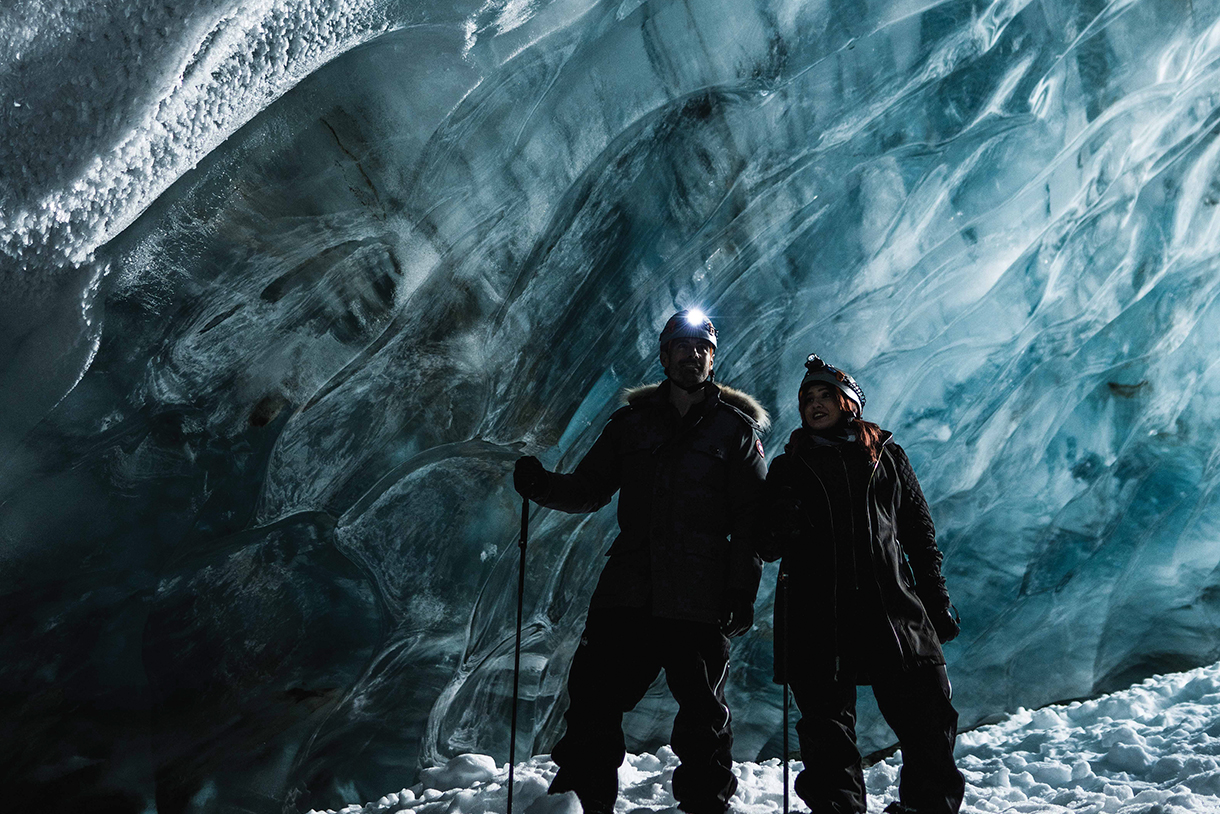
Exploring Ice Caves
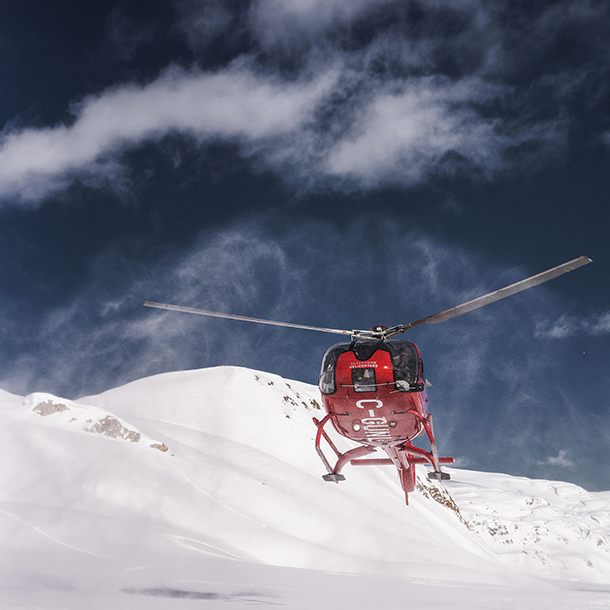

Snow Beach
The rotor wash of the helicopter creates a ripple across the glacier, turning its snowy surface into a moving white sea. At an altitude of 6,400 feet in the Canadian Rockies of British Columbia, a wide expanse of unmarked glacier called the Pemberton Icefield spreads down as far as the eye can see. The snow runs deep here and a walker can easily sink in to their knees. But there is a rectangular patch of firm ground ahead that’s about half the size of a football field. It’s big enough for a helicopter to land. Though it lacks a formal name, it’s known as Snow Beach, a natural patio of sorts that’s the result of a sandy landslide dropped thousands of years ago from atop one of the mountains the glacier slides among. Snow Beach was found only recently, but it’s not the reason to travel here. Just yards away, you can see the black hole. This glacial ice cave is the main event.
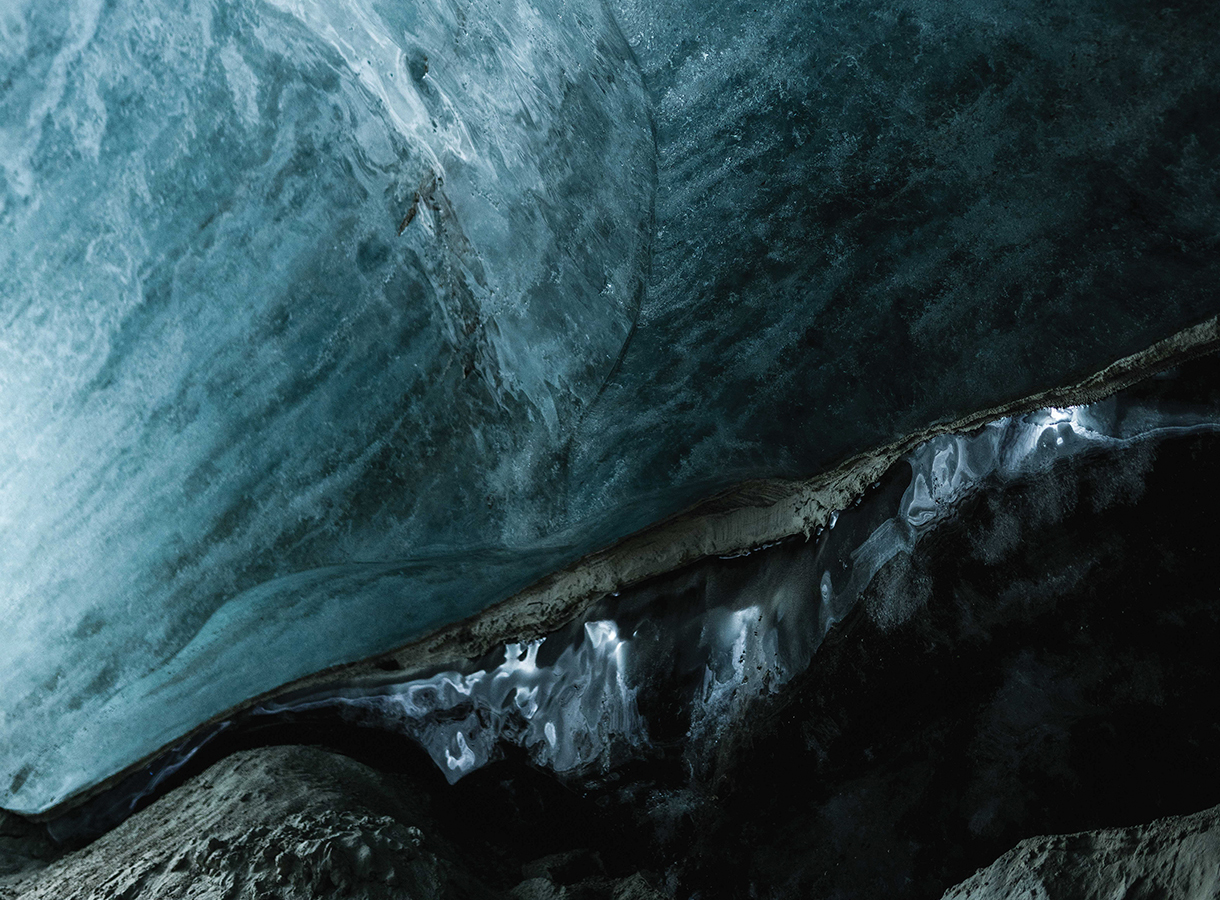
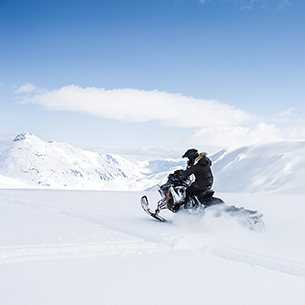
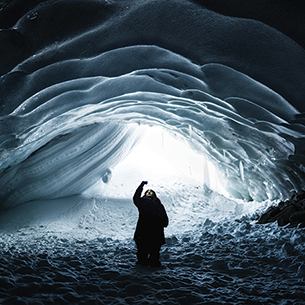


Head-line Mountain Holidays
From Whistler, Head-Line Mountain Holidays (headlinemountainholidays.com), a company that specializes in luxury wilderness experiences, has flown guests of Shangri-La Vancouver (shangri-la.com) to Snow Beach, which it has outfitted with deck chairs, a snowmobile for recreational driving, an extremely customized Sno-Cat, and gourmet food with glasses of Champagne. Head-Line also supplies the required winter gear, including a caver’s helmet and flashlight.
It’s best to visit glacial ice caves during winter, when the ice is its most stable. The cave entrances shift year by year, but climate change is making these moves more dramatic. The descent is hard-core; steps shoveled out of the snow can be climbed down backward ladder-style for about 40 feet. The deeper you descend, the more the all-pervasive whiteness of the glacier ice takes on a blueish tinge, until you’re “living in the blue.” Because glacier ice is thicker and denser than regular ice, it absorbs all the colors of the spectrum except for blue.
Beyond a screen of stalactites, the world suddenly changes. The floor of the cave becomes a dry, stony, sandy light brown. Above is a transparent ceiling of ice where specks of sand and rocks the size of your head are gripped in frozen suspension, as if caught mid-tumble an eon before. It’s an amazing contrast that gets driven home the further you go, with a Head-Line guide pointing out particularly curious spots of interest to demonstrate the cave’s formation, while also noting 26 feet of vertical ice has been lost due to climate change. Head-Line devotes 3 percent of its revenues to its White Is Green ice cap research initiative with Simon Fraser University. This is an experience that may not last forever, even though in person, the glacier itself seems timeless. From $1,395/person; shangri-la.com
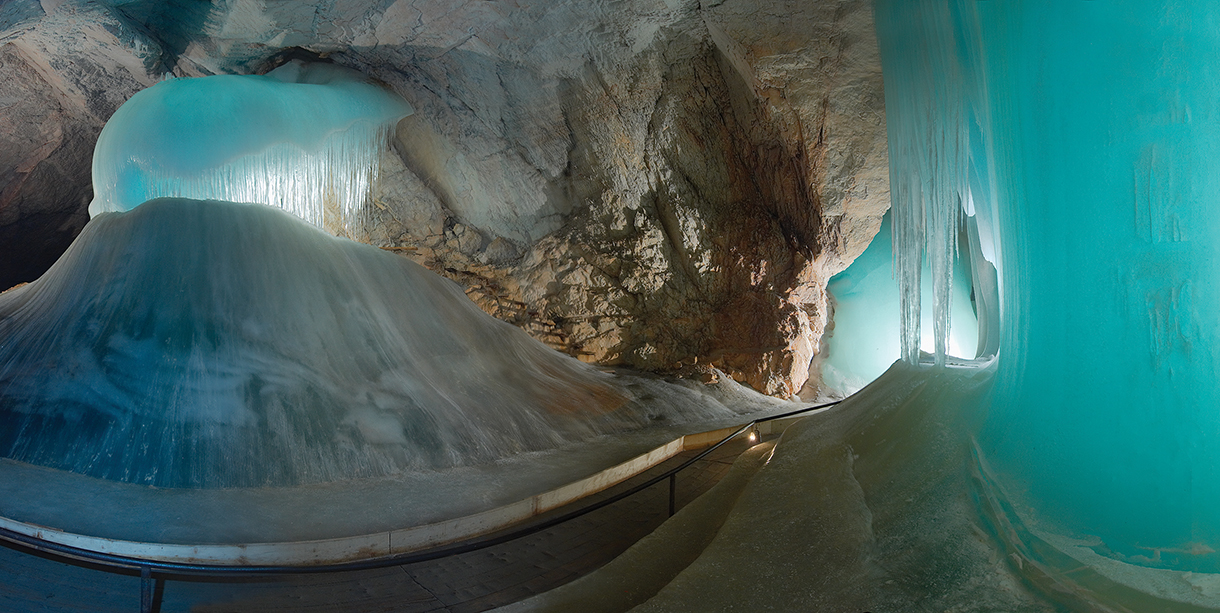
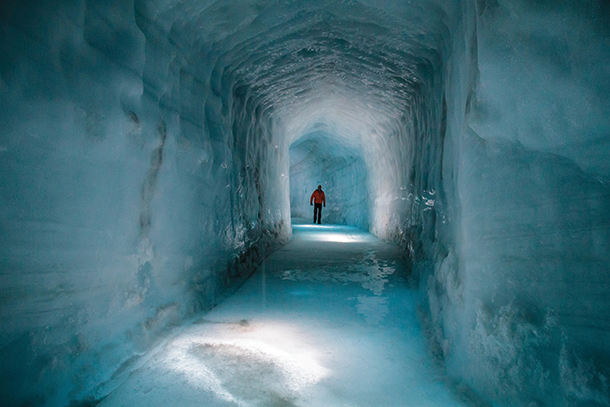
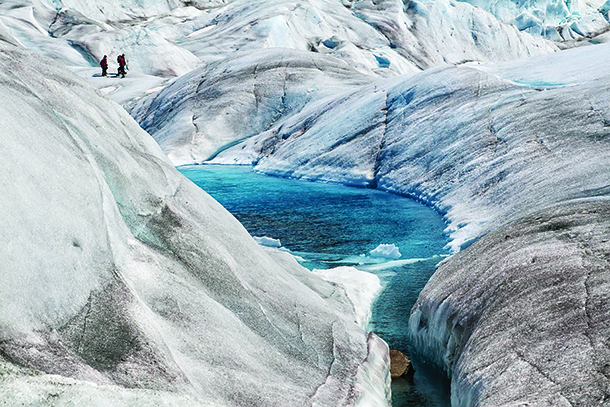
Ice Cave Facts
The biggest ice cave in the world is called Eisriesenwelt, which translates as “world of the ice giants.” Located 15 miles outside of Salzburg, Austria, near the town of Werfen, Eisriesenwelt is 20 miles long. The first half mile, with its amazing ice sculptures, is open to the public. Discovered in 1879, scientists say the ice cave is between 50 million and 100 million years old. eisriesenwelt.at
The country with the most ice caves is Iceland. With 269 named glaciers, Iceland abounds in a mix of natural and glacial ice caves. The Vatnajokull ice cave system is among the most popular and there is even a year-round, man-made ice cave called Langjokull that’s basically a cold apartment of five interconnected rooms. guidetoiceland.is; adventures.is
The best glacial ice caves in the United States are in Alaska. While there are numerous caves in the United States that get cold enough for ice to form, visiting a glacial ice cave means heading north to Alaska. The Matanuska Glacier and Spencer Glacier outside Anchorage are the most accessible. The Mendenhall Glacier in Juneau is draw for the adventurous, and booking a local guide is advisable.




